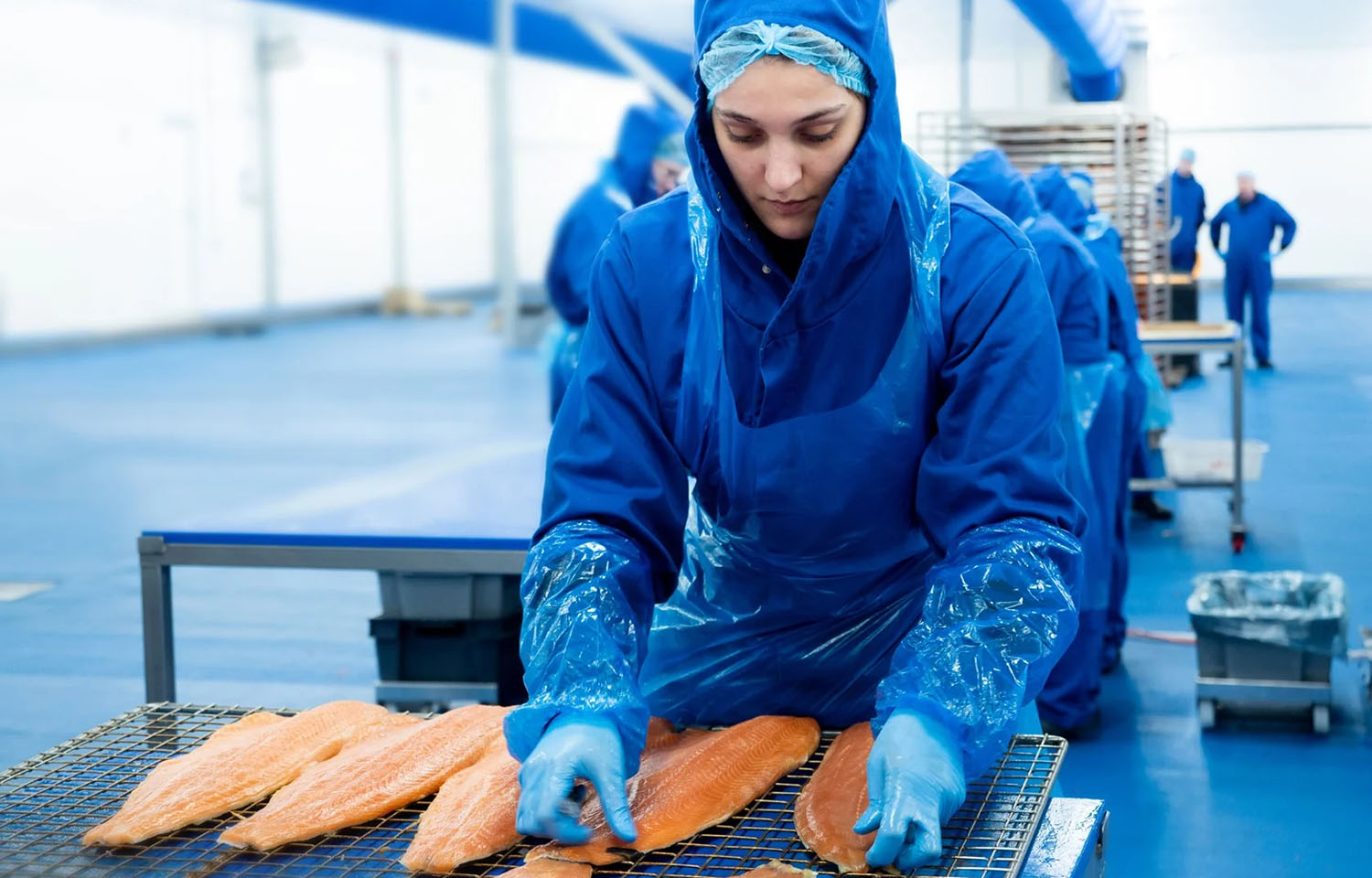So-called “production-grade” farmed Atlantic salmon is now estimated to account for around one-third of Norway’s total salmon output.
In Norway, farmed salmon are classified as either “superior”, “ordinary”, or “production” grade, based on the quality of the fish. Under Norwegian regulations, it’s illegal to export production-grade salmon without first processing it, but after processing, these fillets can be sold as superior- or ordinary-grade. Principally, this law aims to maintain the market reputation of Norwegian salmon as a premium product.
Discussing the current drivers of the Atlantic salmon industry in Kontali’s latest Seafood Explained webinar, Kontali Senior Financial Analyst Flip Szczesny said while grading salmon as production fish or “prod-fish” is a practice specific to Norway, it has an effect on the overall salmon market and creates “strange dynamics” in regard to pricing.
In Q1 2024, and particularly around Easter, the market saw Norwegian salmon prices hit all-time highs at around NOK 140 (USD 12.67, EUR 11.90) per kilogram for whole, fresh, superior-grade products on the Nasdaq Salmon Index. At the same time, the market was seeing high volumes of production fish, and these two elements are closely related, Szczesny said.
While Norway’s salmon exports have largely been based on the provision of superior-grade, whole fish, Q1 2024 saw 30,000 metric tons (MT) more fresh fillets shipped to overseas markets than in the same period of 2023, and this split in product availability has disrupted the market, according to Szczesny.
“If you get the production-grade, you cannot export the fish, but you can process it because the fish is fully edible; it’s just some parts of the fish should not reach consumers. Only superior- and ordinary-grade can be exported out of Norway,” Szczesny said. “Since we have record high shares of the [production fish] grading now – the Food Safety Authority says it’s around 33 percent, which is very high – there has been more fillets exported to Europe.”
Szczesny said actual pricing for Norwegian salmon has not been as high as its listing by the Nasdaq index, primarily due to the fact that Nasdaq’s spot price is narrow in scope – looking just at three- to six-kilo superior-quality fish sold on the European market – and not taking into account the wider range of salmon products being sold.
“The high prices are not being driven by fantastic demand in Europe; they’re driven by the lack in supply of fresh, whole fish. And in general, there’s less fresh, whole fish [and] there’s also less superior-quality [salmon] available, which also affects the price. So, when you already have a small amount available, and additionally, there’s a lot of salmon sold on contract, there’s not much fresh, whole salmon sold to Europe in the spot market, which hikes up the price,” he said.
While Norway’s prod-fish rules are designed to protect the industry, they are increasingly coming under fire …








